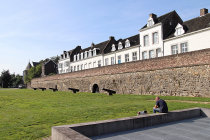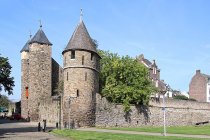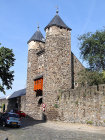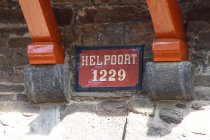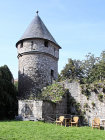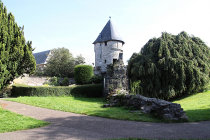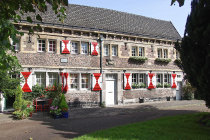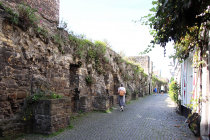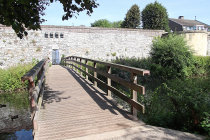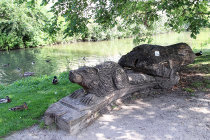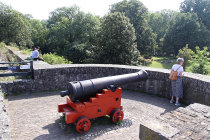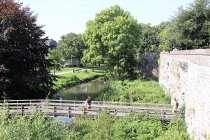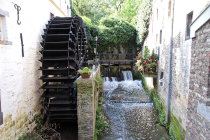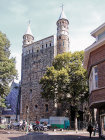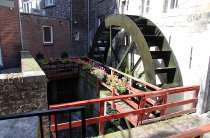The Jekerkwartier is a neighborhood in Maastricht, just north of where the Jeker flows into the Meuse. It must be a very good spot,
as people have lived in this area since ancient times.
Unfortunately, buildings from the Celtic, Roman and Merovingian period did
not survive so the oldest constructions are from medieval times.
Remaining parts of the first city wall and fortifications in
Jekerkwartier are Onze Lieve Vrouwewal, Jekertoren, Helpoort and Lang Grachtje and date from 1230 AD.
In 1375 a second city wall
was erected, of which the Nieuwenhofwal and the Pater Vinck tower survived the ages.
Between the two walls soon monasteries like the Faliezustersklooster popped up.
Watermills were used here since the early middle ages. The Bisschopsmolen is said to be once owned by Godfrey of Bouillon, a leader
of the First Crusade.
Today the Jekerkwartier houses several sections of Maastricht University and scores of students live in the area.
We visited the Jekerkwartier on a sunny day in September 2021.
